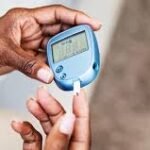Monitoring and Care
Diabetes Overview
Diabetes is a chronic condition that develops when your body either doesn’t produce or effectively use insulin, which it needs to turn sugar into energy. Diabetes can lead to serious complications if not properly managed, but steps can be taken to control it and lower your risk.
There are many different types of diabetes, each with their own causes, symptoms and treatment options.
There’s currently no cure for diabetes, but some treatments may help to manage it and improve quality of life. The condition is not contagious.
Diabetes in Canada
Diabetes is one of the most common chronic diseases affecting people living in Canada.
Around 3.7 million people in Canada over a year old live with diagnosed diabetes (9.4% of the population). This number excludes gestational diabetes.
The number of people living with diabetes is expected to continue to increase as Canada’s population ages and grows.
Diabetes is one of the most common chronic diseases among children and youth. Most children and youth with diabetes have type 1.
The World Health Organization has identified diabetes as one of the major public health challenges of this century.
Types Of Diabetes
- Type 1 diabetes
- Type 2 diabetes
- Gestational diabetes
Other uncommon types of diabetes can be caused by genetic mutations, other diseases or medications.
In all types of diabetes, the body either:
- doesn’t produce enough insulin or
- doesn’t use the insulin it produces effectively
Each type has different causes and may have different treatments.
Type 1 Diabetes
Type 1 diabetes happens when the immune system destroys your pancreas’ beta cells. This causes them to stop producing insulin.
Type 1 diabetes usually develops in childhood or early adulthood, and there is no known way to prevent it. Known risk factors include genetic predisposition and certain environmental factors. About 5 to 10% of people living with diabetes have type 1.
Type 2 Diabetes
Type 2 diabetes happens when the body either:
- doesn’t make enough insulin or
- doesn’t respond well to the insulin it makes
Type 2 diabetes is the most common type. About 90 to 95% of people living with diabetes have type 2. People usually receive a diagnosis after the age of 40, but it’s now becoming more common in younger people too. Type 2 diabetes is often associated with being overweight and may be prevented by regular exercise and healthy eating habits.
Gestational Diabetes
Gestational diabetes is a form of diabetes that develops during pregnancy and disappears after delivery. Gestational diabetes develops in about 10% of pregnancies. It increases the risk of both you and your child developing type 2 diabetes.
In most cases, blood glucose levels can be kept within an acceptable range by:
- being physically active
- eating a variety of healthy foods
If at least 2 weeks of healthy eating and regular physical activity don’t manage your blood glucose levels, insulin injections may be needed.
Overview of services
Diabetes is one of the most researched medical conditions. There are rapid changes in treatment and monitoring options and guidelines. In general, diabetic patients are well aware of their conditions and are open to learning. A Certified Diabetic Educator (CDE) is a great resource at a community pharmacy level in helping old and newly diagnosed diabetics for guidance and education.
Our CDE can help diabetic patients in:
Monitoring of Patient's diseased state
Increase in awareness about disease
Evaluate drug therapy
Teach healthy lifestyles
Teach current blood sugar monitoring
Review insulin awareness






